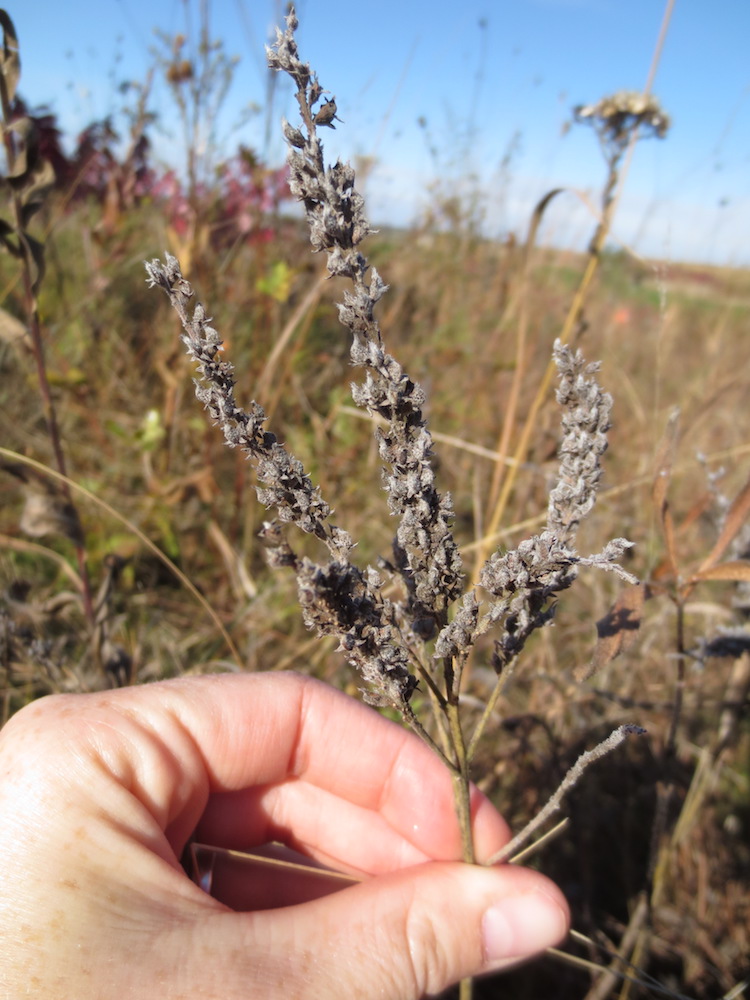INHF sends prairie seed for research to Tallgrass Prairie Center
By Sarah LeBlanc on January 30, 2017 in Blog
When the sun hides behind the clouds and the winter frost begins to coat the plains below, prairies lie dormant in wait for the summer’s heat to help them grow. But the sun, the warmth and the rain aren’t the only things that ensure prairie species survive and thrive — it’s the work of institutions like the Tallgrass Prairie Center in Cedar Falls, Iowa that help spread prairie seeds and grow rare plants all over the state.
The Tallgrass Prairie Center has existed for almost 20 years, advocating for ecological approaches to native prairie growth and providing numerous benefits for Iowa’s humans and vegetation. Ryan Schmidt, INHF’s land stewardship director, has been helping the center collect seeds and redistribute them in different prairie restoration projects around the state. This fall, INHF sent seed from several INHF prairies to aid the Tallgrass Prairie Center's efforts.
 This endeavor will help promote diversity in prairies by spreading seeds from one location to another and encouraging the growth of a variety of native species.
This endeavor will help promote diversity in prairies by spreading seeds from one location to another and encouraging the growth of a variety of native species.
“They gather seeds from across the state from remnant prairies, true native prairie plants,” Schmidt says. “Our seed is just going to be an addition to the work that they’re doing and give them another seed source or another species that they haven’t worked with yet.”
Schmidt tosses a bag of prairie seed in the air. The seed is from a privately protected prairie in Kossuth County, and will be sent to the center for analysis, propagation and then distribution to private seed dealers.
“They grow these plants out and then those plants will produce seed next year or the year after that,” Schmidt says. “Over time this small bag will be multiplied by hundreds.”
 According to the center’s website, successful prairies are diverse prairies, and this is where INHF’s work comes in. By providing seeds that might be rare or uncommon, INHF ensures that these seeds will diversify other plots of restored prairie.
According to the center’s website, successful prairies are diverse prairies, and this is where INHF’s work comes in. By providing seeds that might be rare or uncommon, INHF ensures that these seeds will diversify other plots of restored prairie.
“Genetics is a big part of what Tallgrass Prairie Center is trying to do,” Schmidt says. “They want local ecotype, which are seeds that originated in Iowa or a particular county or a region of Iowa. Growing those plants out and producing seeds that are specific to that region contributes to the overall health and diversity of Iowa's restored prairies.”
The center collects certain prairie seeds from three zones: south, central and north. These zones split the state along lateral lines and determine which seeds should be collected from each zone in order to promote prairie diversity. Native prairies will thrive with a healthy and diverse mix of species from all across the state, as partnerships among Iowa's conservation organizations become more and more common.
Check out more of the center’s projects and programs on their website.